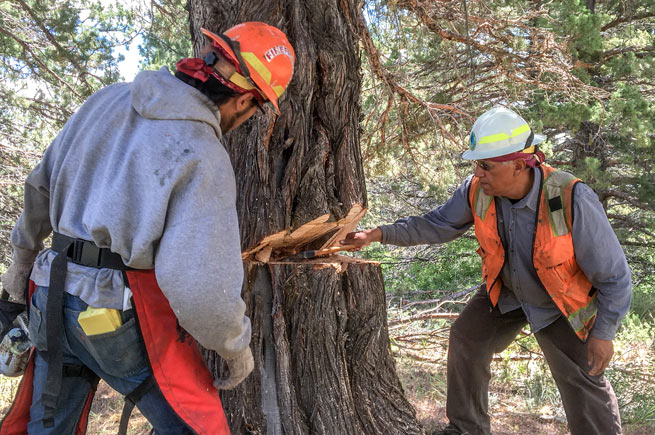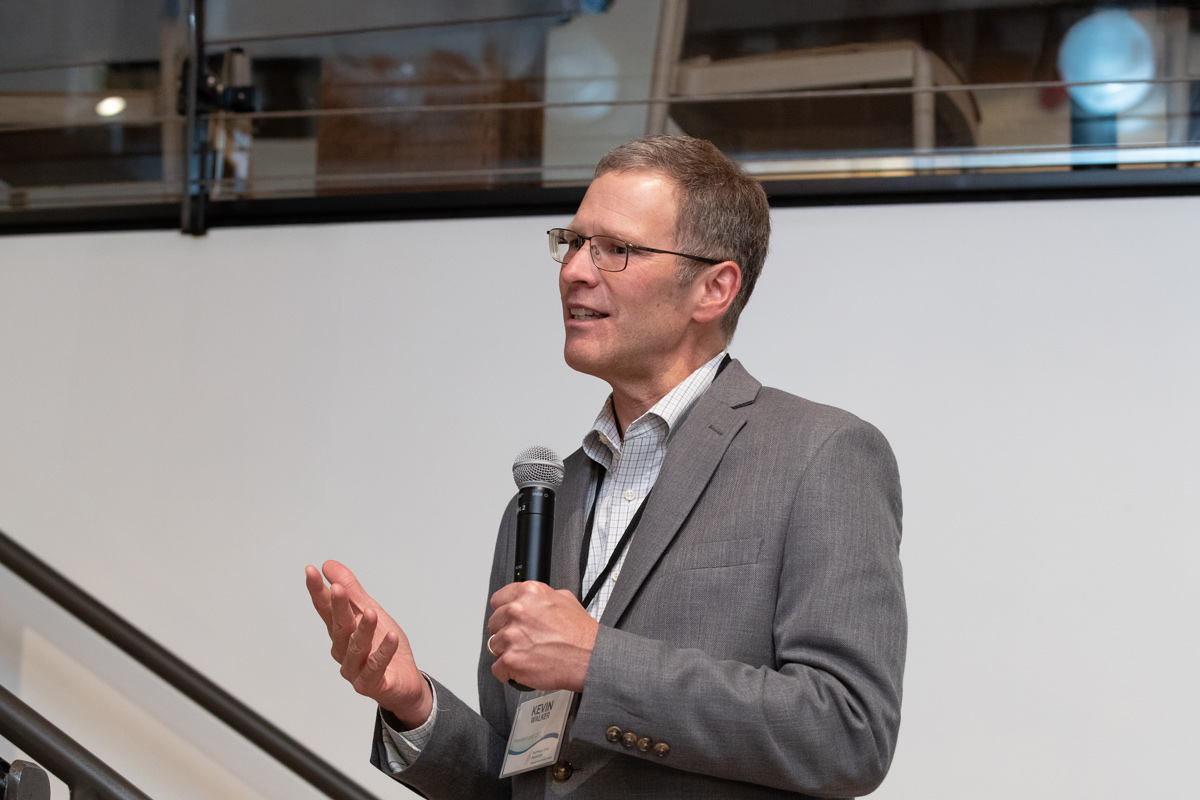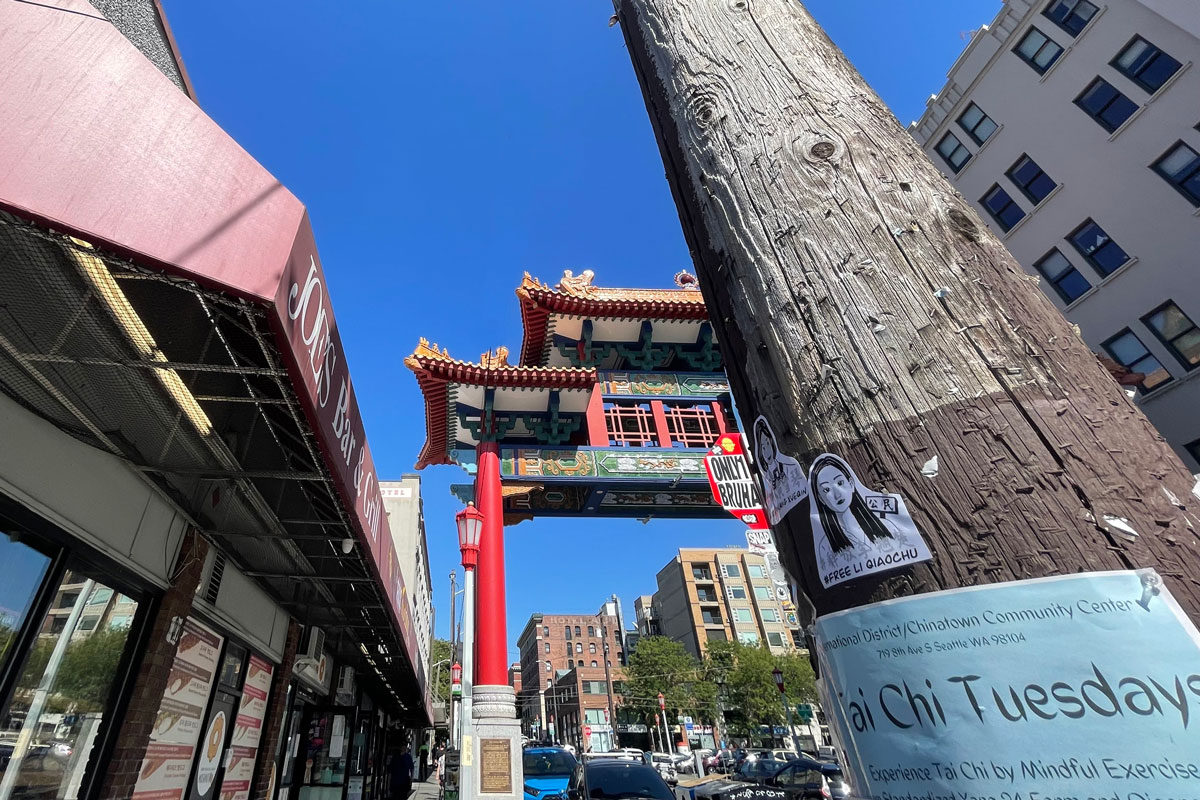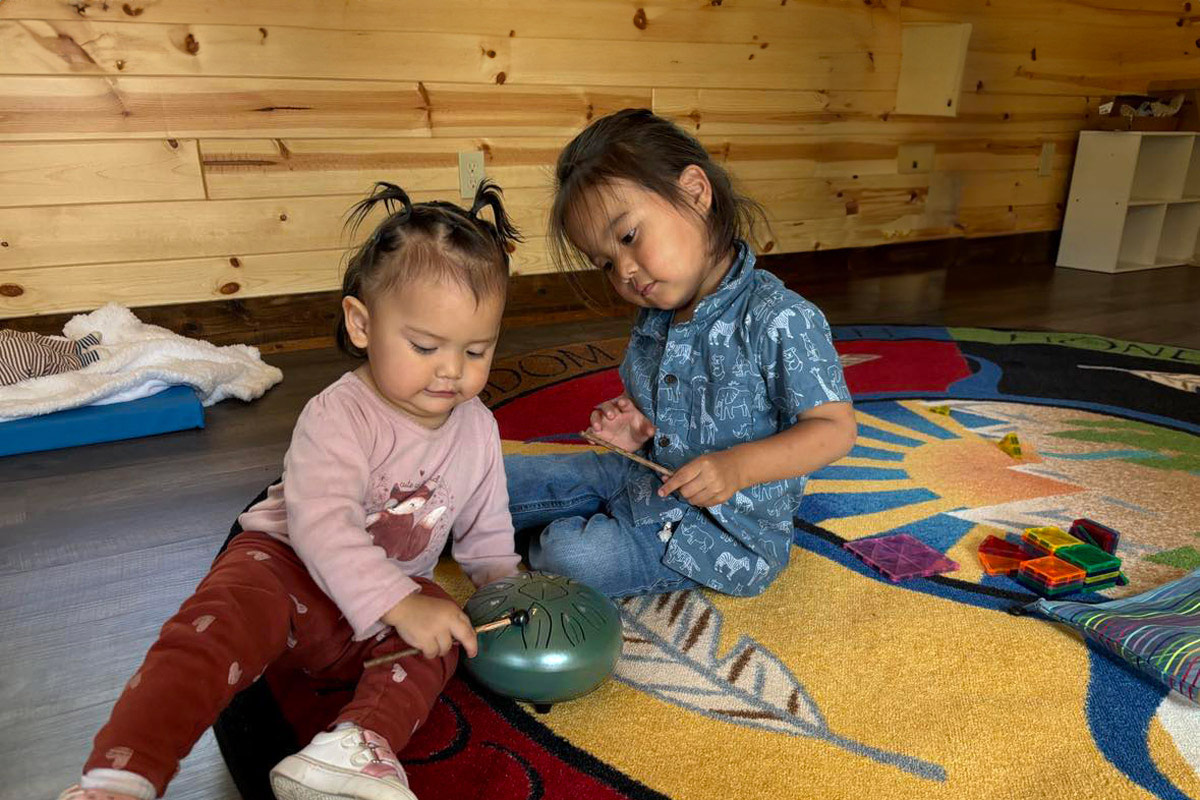Dr. Ian Record is the director of the Partnership for Tribal Governance (PTG)—an initiative of the National Congress of American Indians (NCAI) that focuses on informing and enhancing tribes’ efforts to strengthen their governance systems—and the lead researcher and developer of Tribal Workforce Development: A Decision-Framing Toolkit.
Supported by funding from the Foundation’s Work Opportunity portfolio, the toolkit is the culmination of a multiyear project dedicated to identifying and documenting key strategies that empower innovations in workforce development led by tribal nations, Native organizations, and tribal colleges and universities.
Recently we spoke with Dr. Record about the toolkit. Here’s what he shared:
NWAF: What is the toolkit, and what’s its significance?
RECORD: The toolkit is the culmination of three years of research, during which we looked at workforce development and its role as a powerful strategy for Native nation rebuilding. We examined what drives success in tribal workforce development.
“[The toolkit is] the first resource that covers all of the critical factors of workforce development from an on-the-ground perspective and ties those factors into a tribal nation’s overarching nation-rebuilding efforts and priorities. The toolkit steers leaders away from thinking of workforce development as a stand-alone proposition that works independently of other components of tribal government . . .”
The toolkit is innovative in that it’s focused on workforce development strategies, which is a specific aspect of tribal governance. But it considers workforce development in a broad, comprehensive context. It’s the first resource that covers all of the critical factors of workforce development from an on-the-ground perspective and ties those factors into a tribal nation’s overarching nation-rebuilding efforts and priorities. The toolkit steers leaders away from thinking of workforce development as a stand-alone proposition that works independently of other components of tribal government and is focused only on helping tribal citizens find whatever jobs they can wherever they can. It instead demonstrates the need for tribal leaders to strategically treat workforce development as a key ingredient in their nations’ overall governmental recipes for advancing their long-term priorities.
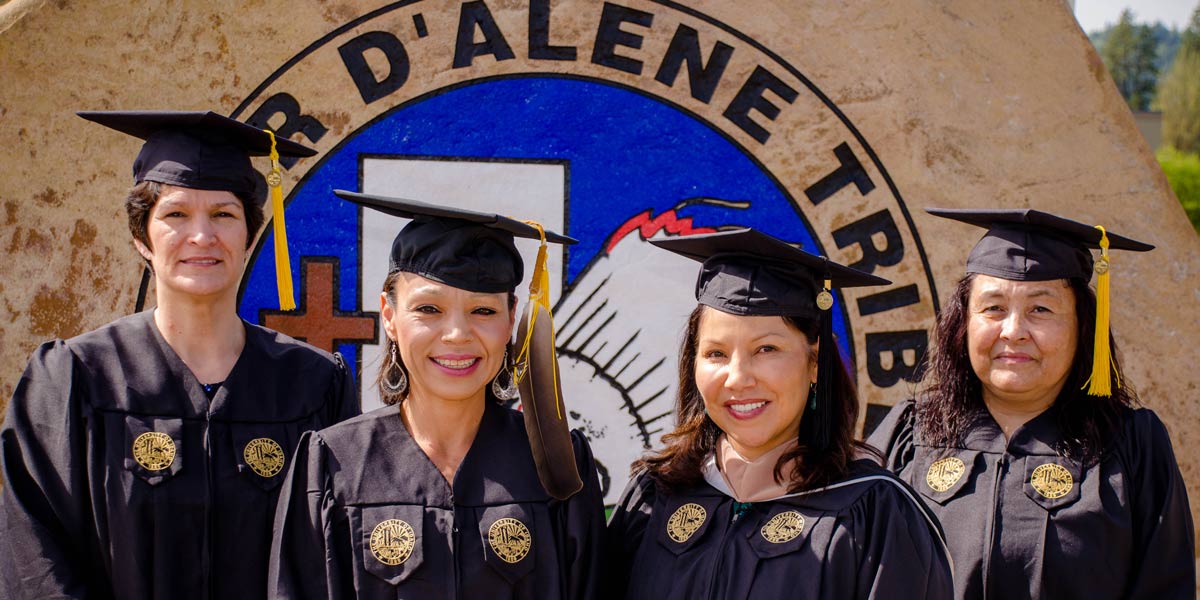
It provides a holistic view of how tribal nations can achieve their long-term priorities through self-determined approaches rooted in cultural values rather than a reliance on external models for workforce development. Our research clearly showed that tribal innovation is the only successful, sustainable path to advancing the ability of tribal citizens to get and keep jobs and navigate past the obstacles (e.g., substance abuse, lack of transportation, inadequate child care options) that often stand in the way of them building meaningful careers over the long run.
We designed the toolkit to explore what tribal governments and the federal government—the two main players in Indian Country workforce development—can do to foster and support innovation that addresses the distinct circumstances, values, and goals of each tribal community.
The toolkit examines 15 key considerations, including tribal governance, strategic vision, integration, citizen engagement, assessment, partnerships, and sustainability, among others. We examine each key consideration from four perspectives: framing the discussion, questions to consider, innovation snapshots showcasing what leading tribal nations are doing, and policy recommendations. The idea is that a tribal nation can’t build and implement a truly self-determined and effective approach to building its human capacity without addressing all 15 of these considerations.
“[The toolkit] provides a holistic view of how tribal nations can achieve their long-term priorities through self-determined approaches rooted in cultural values rather than a reliance on external models for workforce development.”
It’s important to note that this toolkit was produced in close collaboration with tribal nations across Indian Country, and it’s designed exclusively for Indian Country, where the workforce development challenges are perhaps more complex than anywhere else. The toolkit isn’t trying to take a model that works somewhere else and shoehorn it into a tribal context.
NWAF: How are tribes using the toolkit?
RECORD: Since the toolkit’s release in June 2018 at NCAI’s Mid Year Conference, we’ve been disseminating it in various ways. We have provided copies to more than two dozen tribal nations and organizations who worked with NCAI in developing the toolkit, to attendees at NCAI’s conferences and recent regional and national tribal workforce development conferences, and to tribal leaders and workforce development practitioners from across the country who have been requesting them. We also have launched an online resource center where folks can go to learn more about the issues and strategies discussed in the toolkit, and we recently conducted a survey to learn about how tribal nations are using or plan to use the toolkit so that we can share that info with the rest of Indian Country. For example, some tribal nations are using it as a guide for engaging in government-wide strategic planning. Others are using it at the departmental level in orientation for new employees and as part of training for existing employees.

In the coming months, we will be doing some targeted promotion of the toolkit with tribal colleges and universities, showing them how they can integrate this teaching tool into the classroom.
It’s also important to note that as part of NCAI’s project, PTG also produced a federal policy brief on tribal workforce development and four “Innovation Spotlight” case studies of leading tribal nations in this area of tribal governance: Coeur d’Alene Tribe, ID; Confederated Salish and Kootenai Tribes, MT; Gila River Indian Community, AZ; and Ysleta del Sur Pueblo, TX.
“Some tribal nations are using [the toolkit] as a guide for engaging in government-wide strategic planning. Others are using it at the departmental level in orientation for new employees and as part of training for existing employees.”
NWAF: What feedback have you received about the toolkit so far?
RECORD: I had a particularly memorable exchange with a tribal leader from Alaska when the toolkit was released at NCAI’s Mid Year Conference in June 2018. He said the toolkit “gives us direction and it gives us hope.” Direction was the intention of the project, so that wasn’t a surprise. But the hope part was intriguing. I think he felt inspired and empowered to learn about other tribal nations’ successes in crafting effective solutions to challenges that his nation shares with them:
How do we keep our kids in school until they reach career age? How do we show them at a young age what careers are out there so they will be inspired to pursue them? How do we address the significant obstacles many of our people face in their personal lives so that they can achieve success in their professional lives? How do we bring those who we invest in through higher education scholarships back home so they can contribute their knowledge and skills to the betterment of our communities?
The toolkit poses these and many other critical questions, and shows how leading tribal nations are answering them. Taken as a whole, what their answers demonstrate is that tribal nations must take full ownership of their workforce development approaches, which often means uprooting the limitations and programmatic silos that federal approaches have created. They must thoroughly assess whether their current approaches are effective and culturally appropriate, and what their findings mean for how they should change them.
“Taken as a whole, what [leading tribal nations’] answers demonstrate is that tribal nations must take full ownership of their workforce development approaches, which often means uprooting the limitations and programmatic silos that federal approaches have created.”
The toolkit also serves as a guide for strategic conversations and collective action between tribal leaders and tribal workforce development staff regarding the overall landscape of their common goals (from natural resource management to language revitalization) and how workforce development innovations can help them achieve those goals.
The policy recommendations in the toolkit aren’t prescriptive, but rather suggestive, and they flow from the factors that have driven success across tribal nations: If you want to achieve your nation’s vision for a brighter future 50 to 100 years from now, then you need to be treating workforce development as a multigenerational strategy.
“If you want to achieve your nation’s vision for a brighter future 50 to 100 years from now, then you need to be treating workforce development as a multigenerational strategy.”
NWAF: What’s next for the toolkit?
RECORD: In addition to continuing to disseminate the toolkit to interested tribal nations, leaders, and employees and then learning from how they are using it, this spring we’ll be launching an in-depth pilot project with two tribal nations in the NWAF region. As part of this project, NCAI will provide the two nations with on-site facilitation followed by ongoing technical assistance over 18 months to guide and inform their development of tribal government-wide strategic plans for workforce development, with the toolkit serving as the foundation for their strategic decision-making. NCAI will take what we learn from these pilots and share it with other tribal nations to inform their efforts.
PHOTOS (from top):
Tribal Workforce Crew Manager Joe Ochoa trains a tribal crew member for the Lomakatsi Restoration Project (LRP), a nonprofit that partners with three tribal nations in California. (Photo: LRP)
Coeur d’Alene Tribal members Tina Jordan, Debbie Louie-McGee, Laura Stensgar, and Rhonda Lozon receive their degrees from the University of Idaho, May 2014. (Photo: Jennifer Fletcher. Courtesy of Council Fires)
Participants in the Gila River Indian Community’s Career Pathways Small Business Sector program, 2014. Left to right: Daniel Wilson, Kevin Smith, Hadessa Johns, David Johnson, Rodney Johns, Lilia Lumus, Richard Lyons, and Jeri Thomas. (Photo: Mikhail Sundust/Gila River Indian News)

